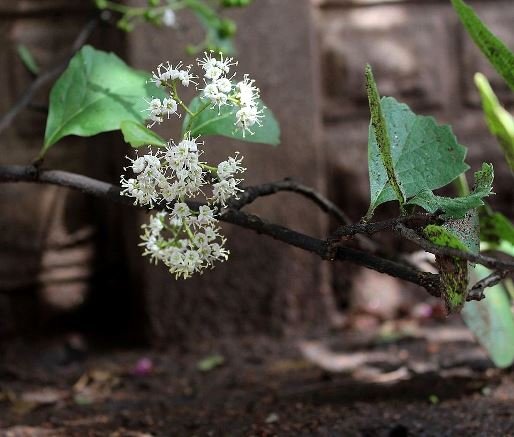Ehretia

Ehretia is a genus of trees, shrubs and a few suffrutices in the Boraginaceae or forget-me-not family. The trees are often multistemmed, the branches rigid, arching or drooping and the plants deciduous and variously hairy.
The simple leaves are alternate or fascicled on spur-branchlets, sessile or with short petioles. Leaf-shape is obovate to circular, usually with entire margins. Blade surfaces are hairy but when hairless the petioles are densely hairy.
The inflorescences grow at stem-tips and from leaf axils, usually as branched cymes. The calyx tube is shallow, its five lance-shaped lobes hairy outside, hairless within. The usually five-lobed corolla has a tube varying in length. Flower colour is white, blue or mauve.
The stamens occur in the same numbers as the petal lobes. The linear filaments arise from the corolla throat and are in most species exserted. The oblong anthers are lobed at the base. The superior ovary is two- to four-chambered. The style is flattened with two branches, the stigmas head-like.
The fruits are nearly globose, fleshy drupes containing four one-seeded stones.
There are about 75 Ehretia species across the tropics in Africa, Asia, the Americas and the West Indies. Only four of them occur in southern Africa.
The plant in picture is Ehretia amoena (Leistner, (Ed.), 2000; Coates Palgrave, 2002).

